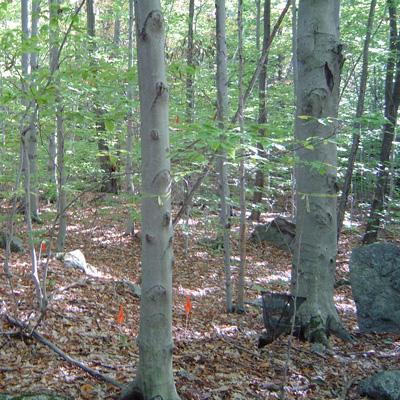Amino Acid Production, Turnover, and Plant Uptake in the Northern Forest

NSRC researchers investigated the mechanisms that limit proteolytic enzyme activity, or breakdown of proteins for use by plants, in Northern Forest soils. Microorganisms, such as mycorrhizae (beneficial fungi associated with roots), produce proteolytic enzymes to break down proteins into amino acids, one step in the soil nitrogen cycle. Thus, alterations of proteolytic enzyme activity in response to global climate change can have important impacts on the availability of soil nitrogen for tree growth.
Researchers tested the response of proteolytic enzymes to manipulations of temperature, protein and nitrogen availability, and root abundance. They also examined whether these responses were influenced by presence of tree species that differ in their associations with soil chemistry and mycorrhizal fungi. This research was conducted in single tree species plots dominated by arbuscular mycorrhizal (fungus penetrates root cells) associated trees, sugar maple and white ash, or ectomycorrhizal (fungus forms sheath on outside of root tips) associated trees, eastern hemlock and American beech. The plots were located at the Harvard Forest in Massachusetts and the Pisgah State Park in New Hampshire.
Protein availability limited proteolytic enzyme activity to a greater degree than did temperature in the soils of all four tree species. In addition, researchers found that ectomycorrhizal tree roots, not arbuscular mycorrhizal tree roots, promoted proteolytic enzyme activity in soils. These results suggest that response of the nitrogen cycle to global change in Northern Forest soils is not only a function of increasing soil temperature but also involves a complex interaction between microbes, tree roots, and availability of protein sources.
